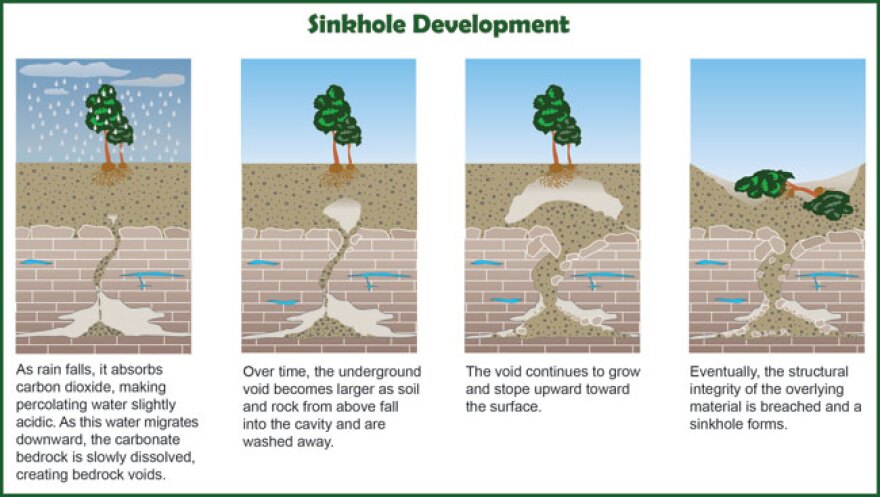What exactly is a sinkhole?
A sinkhole forms when the surface layer of ground collapses into a cavity underneath. Associate Professor of Geology at MU Martin Appold explains these features in more detail:
“They’re holes in the ground that form as a result of caves developing below the ground’s surface that come close enough to the ground’s surface that at some point the rock can’t support its own weight.”
“Ultimately the cause is from ground water that is percolating through the fractures, usually in limestone bedrock,” Appold said.

And there is plenty of limestone bedrock in Missouri. Limestone is softer than other kinds of bedrock and more easily dissolved by groundwater. We have a kind of geography called Karst topography, referring to the landscape formed by this limestone bedrock. Limestone is composed of calcium carbonate and according to the Missouri Department of Natural Resources, 59% of the state has such carbonate rock underneath the surface.

Are sinkholes an issue in Columbia?
According to Appold not really, or at least, not yet. Most of the land the town sits on isn’t on top too many Karst features. A little further south, though, is.
“I haven’t observed sinkholes really in the city itself. Having said that, the city is expanding southward into an area where we know there are sinkholes— in the region of Rock Bridge State Park,” Appold said, “Particularly if I lived in the southern part of the city, I might be a little concerned about that. I would want to know before I bought a house if someone had looked [into possible sinkhole activity].”
A place where sinkholes are an issue in further down in the state, places like Springfield and Nixa. Sinkholes there are pose real hazards if they open up under a street or home.
KBIA will be doing more reporting on sinkholes in the coming weeks. If you have any questions that you would like us to ask a sinkhole expert or have a sinkhole experience to share, tweet at us @CoMoExp or comment below.

